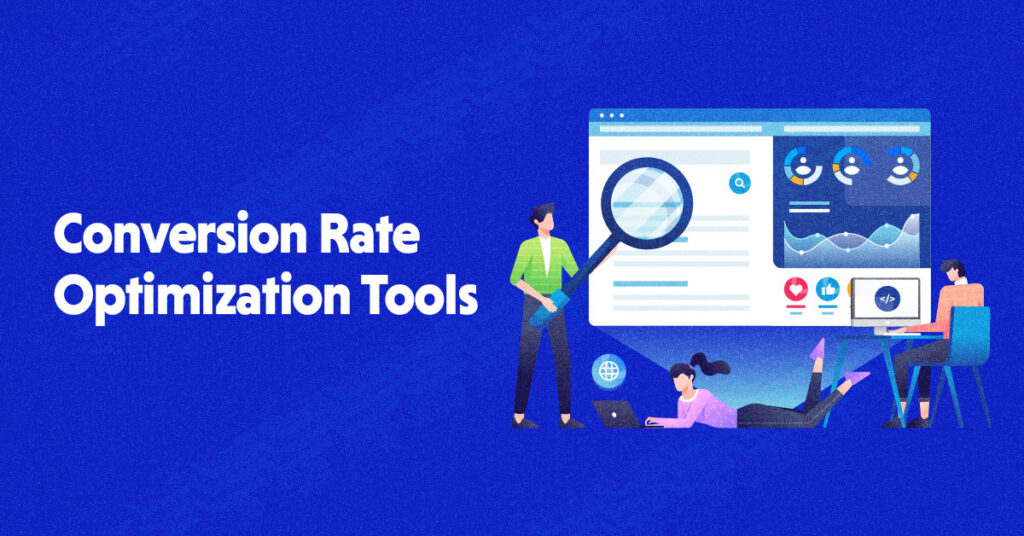
It’s a fantastic feeling to have your website and content viewed by thousands of people. Even better is to see that traffic converts into leads and sales. Don’t let your audience drop out right before the finish line – they need to be willing to make the purchase or give out their information.
This is where understanding the customer journey and workflow comes in. How are customers interacting with your website? Which parts are they engaging with, and which are they ignoring?
Knowing the answers to these vital questions can help you streamline customer experiences and increase conversion rates.
This article will share 14 highly rated conversion rate optimization tools to help you better understand website performance and make informed, data-backed decisions.
Build your store using fast ecommerce hosting.
Why compromise on performance? Choose Cloudways for the best experience!
Here are some of the most popular conversion rate optimization tools in use today.
CRO Testing Tools
Here are some of the popular CRO tools that you can choose for testing new changes.
1. HelloBar
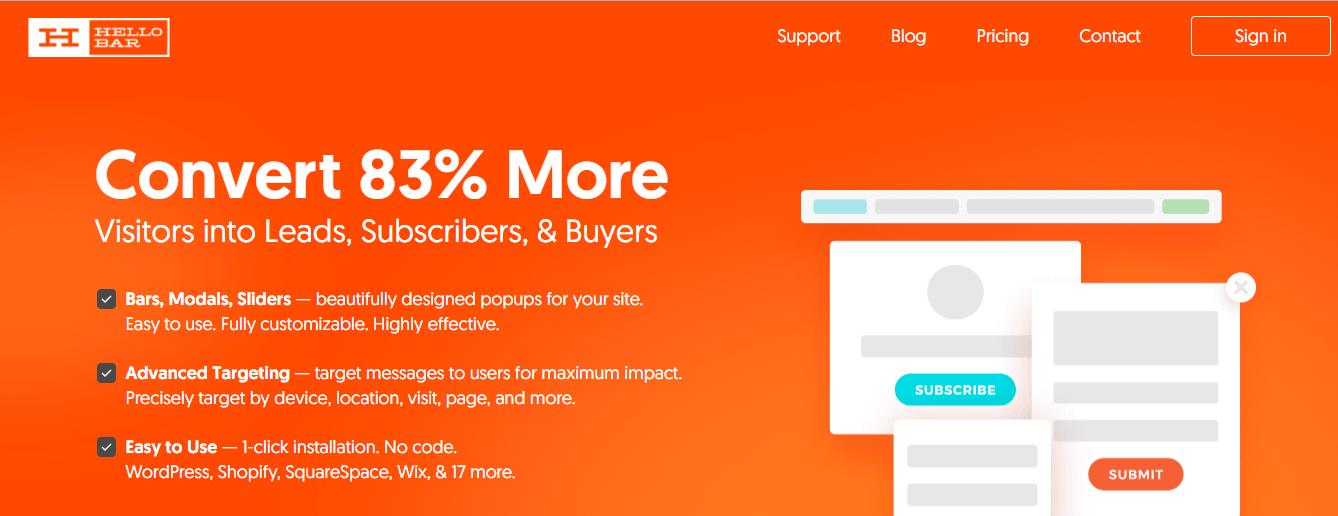
The HelloBar plugin integrates a variety of popups to websites to turn traffic into customers.
With HelloBar, you can considerably reduce guesswork to narrow down high conversion call-to-actions. Multiple analytics tools like HelloBar Elementor provide effective A/B testing and precise visual data.
The two great things about HelloBar are customizability and compatibility.
A single-step installation enables easy WordPress-like integration with Wix and Shopify. HelloBar is also compatible with various website templates, meaning you can have popup banners with clear CTAs up in minutes.
Add the website conversion tool’s straightforward interface and free starter plan to the mix, and you have a winning formula for one of the best conversion rate optimization tools.
2. HotJar
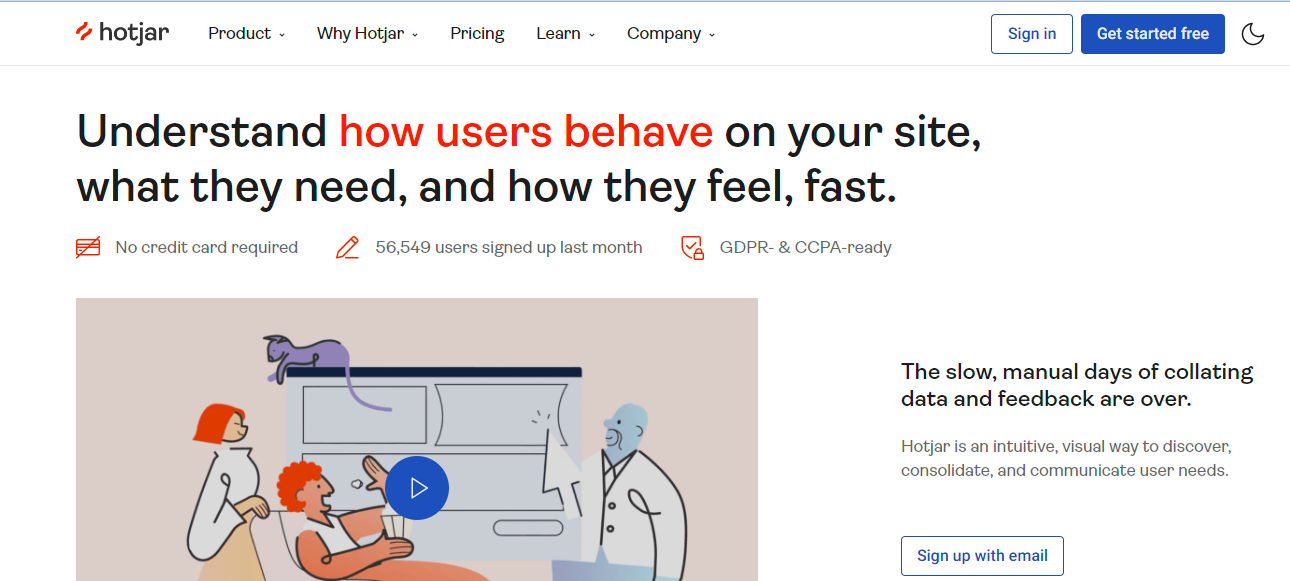
HotJar is heat mapping software that helps to understand customer journey and workflow.
In simple words, HotJar chips into websites to provide a visual representation of user behavior in the form of colors. The higher the user activity, the bolder the color in those regions. This information helps users recalibrate websites for optimal engagement and conversions.
HotJar is super easy to use, even for non-techy users. The user interface and UI are super friendly, and there are various freemium options. You can also fast forward user sessions up to 4x, significantly reducing wait times.
One limitation is that there is no option to download recordings. The plugin is also incompatible with Google analytics.
Read what Ross Paquette has to say about scaling his ecommerce business
3. InstaPage
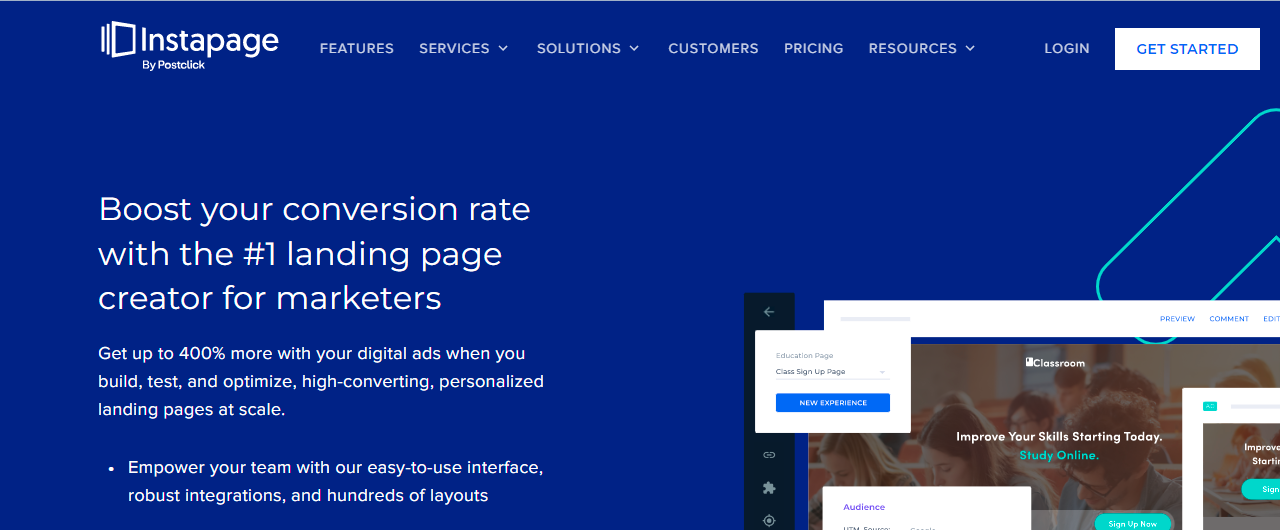
Interested in creating powerful landing pages that generate maximum leads and help you improve conversion rates? Instapage is one of the best website conversion tools that you can use.
Hosted in the cloud, Instapage has an array of customizable templates and practical page-building tools to help you create conversion-centered landing pages.
The best part: You don’t need advanced coding skills to get the best out of Instapage. Intuitive website conversion tools like heatmaps, split-testing, form builders, and analytics help make effective landing page decisions and increase sales.
Instapage is also fully integrable with WordPress and many email marketing platforms through Zapper, making it one of the best conversion rate optimization tools.
Cloudways provides us with a safe and stable server, and reduces the threshold of technology use. It is not only inexpensive, but also easy to use.
– Sharline Shaw, founder of LeeLineSourcing
Opt-In CRO Tools
If you’re looking for CRO tools that you can use to create opt-in forms, here are a few popular choices.
4. ConvertBox
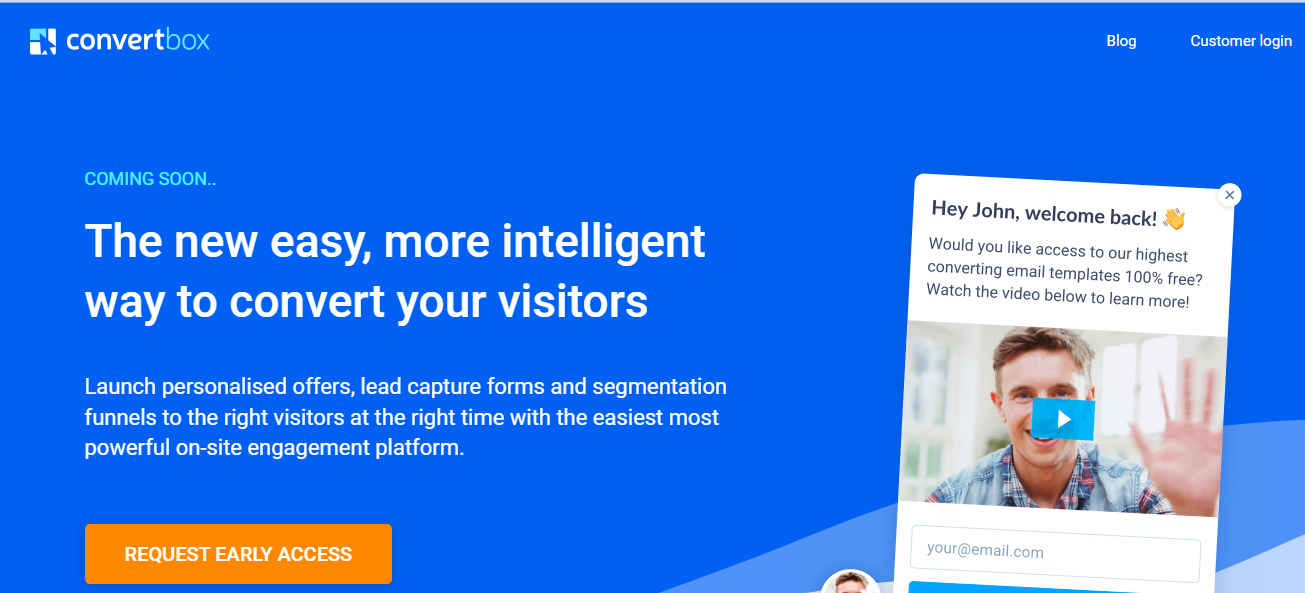
ConvertBox is another great hosted tool that helps you build powerful call-to-action pop-ups and opt-in forms to capture customer journeys.
ConvertBox offers a more personalized experience to clients and traffic, with various custom fields and layouts. It also supports A/B split testing and segment funneling. This lets you narrow down the most effective designs and strategies for maximum conversions.
ConvertBox’s algorithm also analyzes multiple variables, such as scroll percentage and number of clicks to more accurately target specific customer segments. You can also track everything in real-time, making it possible to fix mistakes on the go.
5. OptinMonster
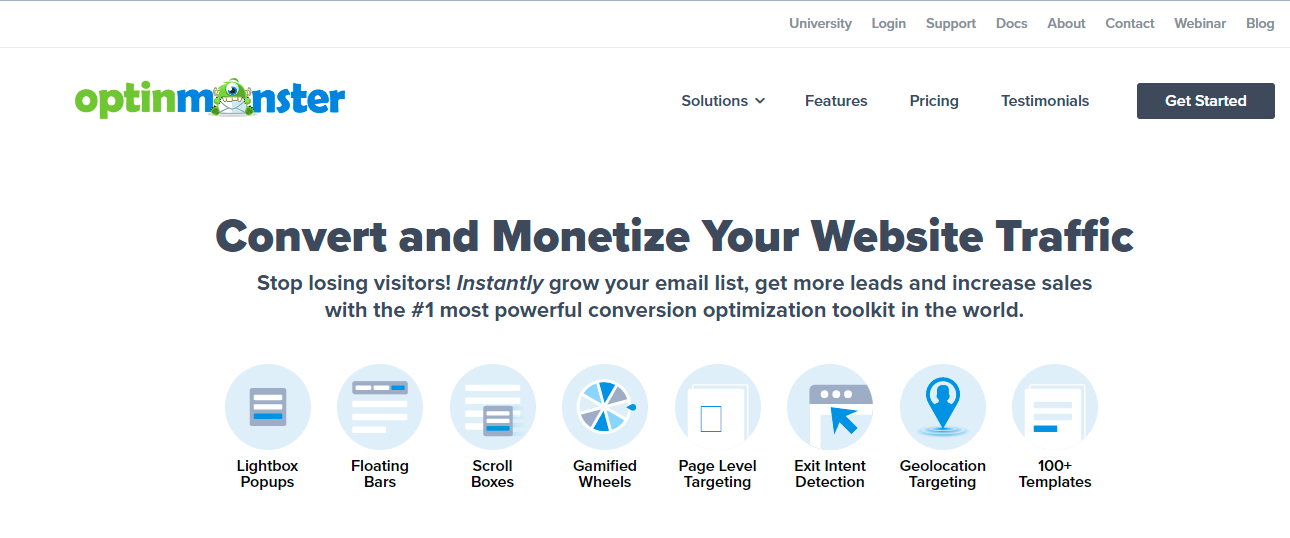
OptinMonster is a lead generation tool with features that increases newsletter signups, content engagements and product sales. It’s also regularly updated and compatible with several CRM platforms, including WordPress.
OptinMonster has a vast library of customizable templates for opt-ins and popups to optimize your website’s conversion rates. There are also several features to change the appearance of these lead generation assets, such as the InactivitySenor and Exit Intent. You also have A/B testing and in-depth conversion analytics to understand website performance.
However, OptinMaster’s greatest USP is also a drawback, depending on users’ requirements. Some users find the abundance of features to be overkill. Furthermore, the subscriptions are expensive and not as accommodating to small businesses.
6. OmniConvert
![]()
Omniconvert is a comprehensive and versatile conversion optimization platform. Besides A/B testing, custom popup banners, and user survey options, OmniConvert enables users to design personalized experiences for visitors according to cart value, weather, location, and more.
In fact, Omniconvert boasts one of the most advanced segmentation capabilities in the market, with 41 data points ranging from API and CRM data to user behavior and traffic source.
However, if you’re running a small website and only need an essential and elemental lead generation tool, Omniconvert may not be the best fit. It’s more beneficial for advanced marketing experimentation and product teams.
Web Analytics Tools
Many CRO tools can be used for analyzing web traffic on different pages, including your checkout pages. Here are some of the popular CRO web analytics tools.
7. Google Analytics
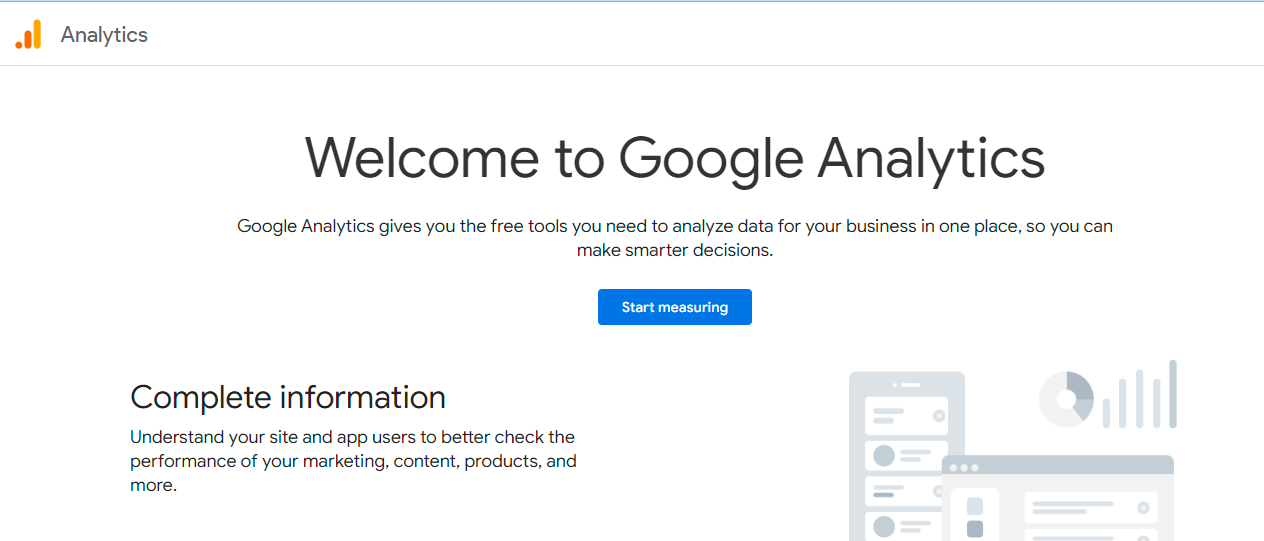
Google Analytics is one of the most popular free-to-use self-service business intelligence tools. It seamlessly integrates with Google Ads, Studio, Analytics, and other Google marketing services, to comprehensively map website performance.
One great thing about Google analytics is automatic data collection. It automatically creates website reports in Google Docs and Sheets about bounce rates, internal site searches, and other vital factors affecting conversions. You can also create customized reports using your own metrics and parameters.
That said, there’s a continuous learning curve associated with using Google Analytics. Luckily, many free resources are available – like YouTube tutorials and LinkedIn articles – for advanced mastery. Also, the free version of Google Analytics has most of the features that small and medium businesses need.
8. CrazyEgg
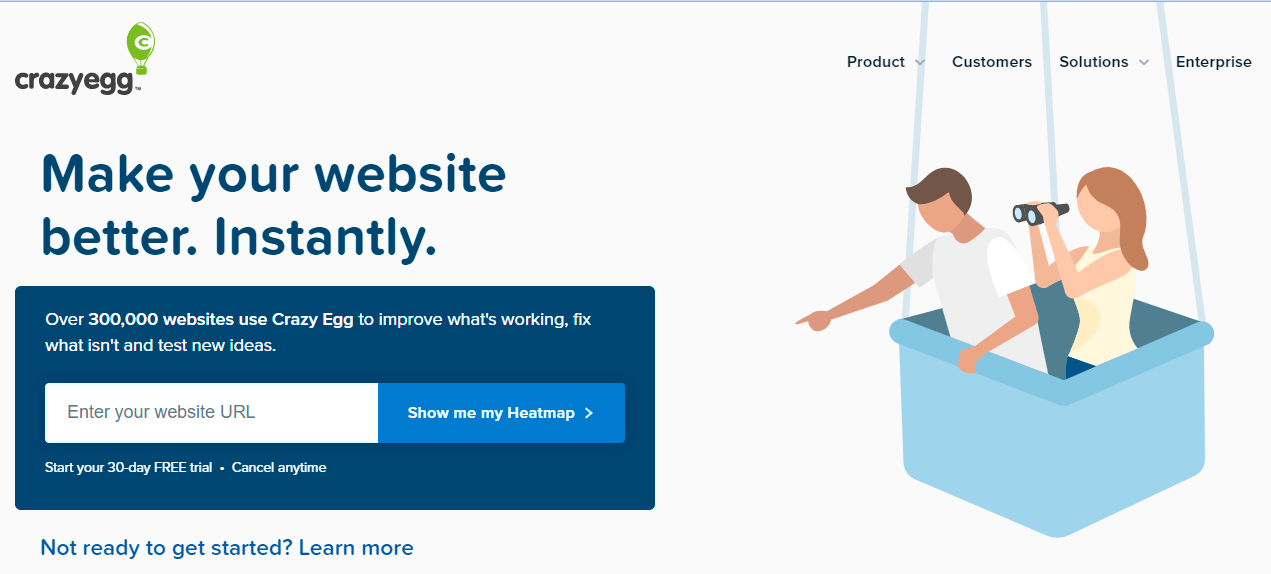
Crazy Egg utilizes mouse-tracking tech to map customer interactions with your website. The result: You get visual data of where your traffic comes from, what parts of the websites get the most clicks, and which get most ignored. It’s like getting an in-depth x-ray of your website.
The difference between CrazyEgg and other heat mapping software is specialization.
CrazyEgg’s sole focus is heat mapping, and this is where it excels. The tool maps customer workflow through several views, including heatmap, scroll map, confetti, and overlay views. This produces more in-depth data on website activity so you can make more educated design and layout decisions.
Support is the one area where CrazyEgg lacks. There’s no live chat option. However, the software is easy to use, and in most cases, FAQs are enough to get answers.
Research-Based CRO Tools
Here are some research-centric CRO tools that you can use to further improve conversion rates.
9. SurveyMonkey

SurveyMonkey has become the go-to platform for designing online surveys in recent years, largely thanks to the tool’s accessible and easily customizable survey designs. You can choose from more than 200 survey templates and 13 question types, including image-based questions.
The platform also has impressive data-reporting visuals, with the option to customize results according to different chart displays. You can also view responder data based on individual and collective responses.
SurveyMonkey’s annual subscription plans may be a bit pricey for some users. However, if you don’t mind spending a little extra, the tool’s easy interface, survey setup and customizability process, and robust data analytics capabilities are hard to match.
10. UsabilityHub
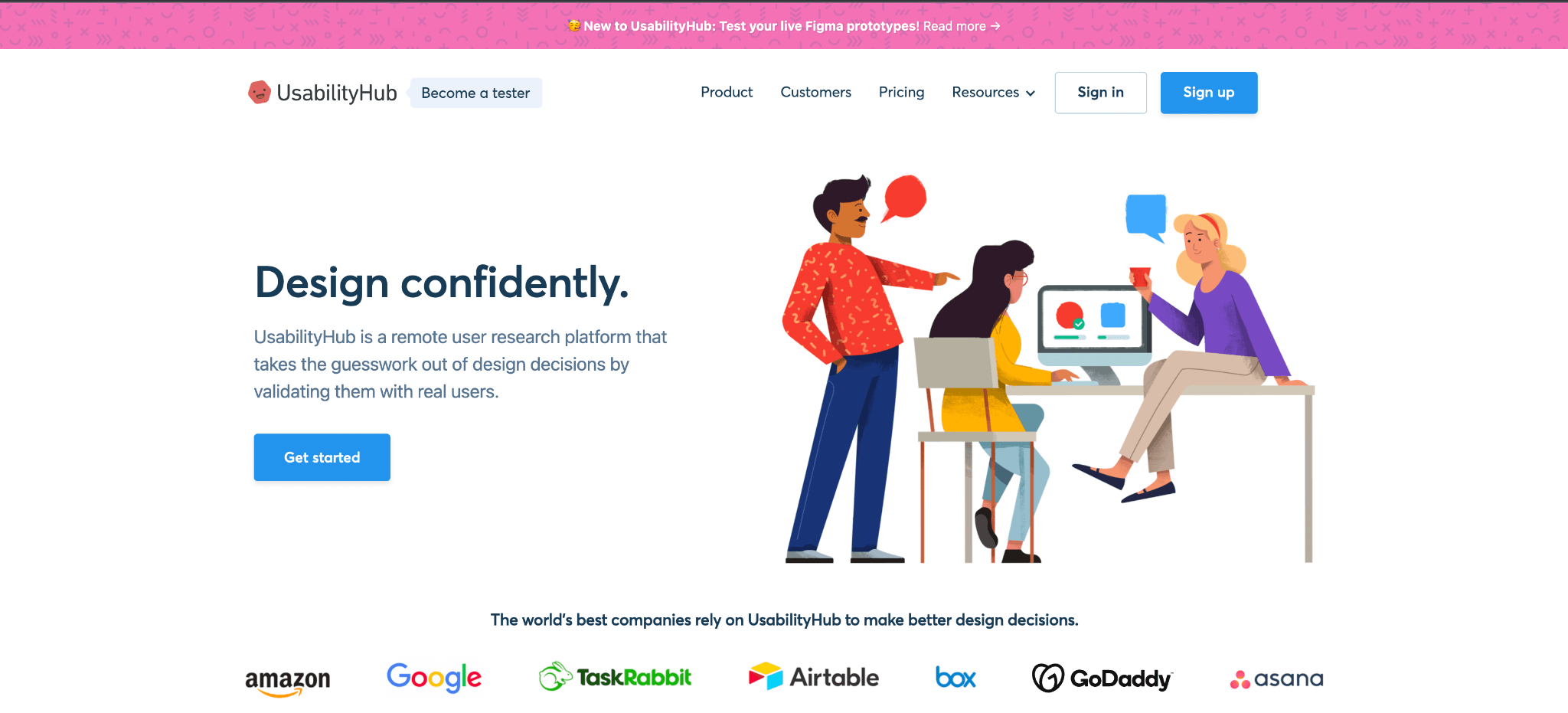
UsabilityHub is a research platform designed to help businesses perform marketing and sales experiments on websites and applications and collect feedback from real users. The tools’ dashboard is incredibly intuitive and user-friendly, giving you the option to access existing projects and create new ones.
Usability hub lets developers create custom surveys based on defined logic conditions. It also allows supervisors to analyze heatmapper click clusters to determine key user routes on the UI. However, demographic user targeting is not as comprehensive. You can’t filter users based on industry or job title, for instance.
Overall, UsabilityHub is a high-speed, relatively inexpensive, and powerful conversion optimization platform.
Customer Journey Mapping Tools
Now, if you want CRO tools that can be used to map customer journeys and analyze performance, here are a few options.
11. HubSpot
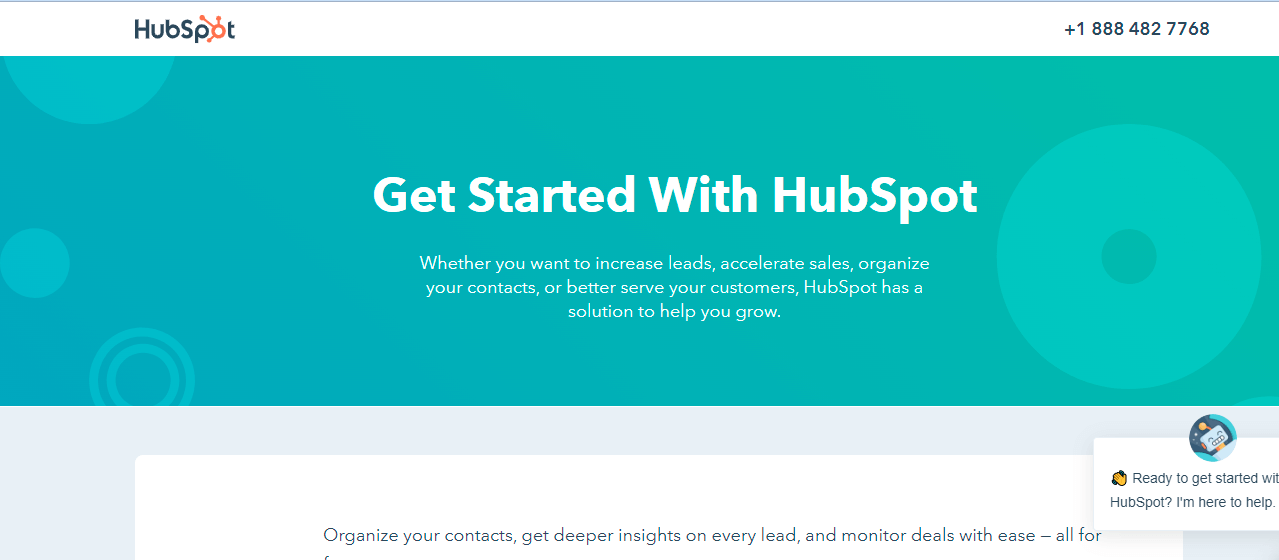
Hubspot is a comprehensive CRM solution that offers scalable sales, marketing, content management, and many other conversion rate optimization tools. It also has the most versatile free plan among CRMs. You can manage a million clients free of cost and a host of free tools, including free business templates, invoice and blog idea generator.
Hubspot is also highly user-friendly. Despite having hundreds of features, everything is easily accessible. With simple clicks, drags, and drops, you can create landing pages, custom emails, layouts, forms, and even schedule bulk social media content.
The platform is also known for its excellent human customer support. However, live support is limited to paid plans, and the pricing tiers are complicated.
12. Optimizely
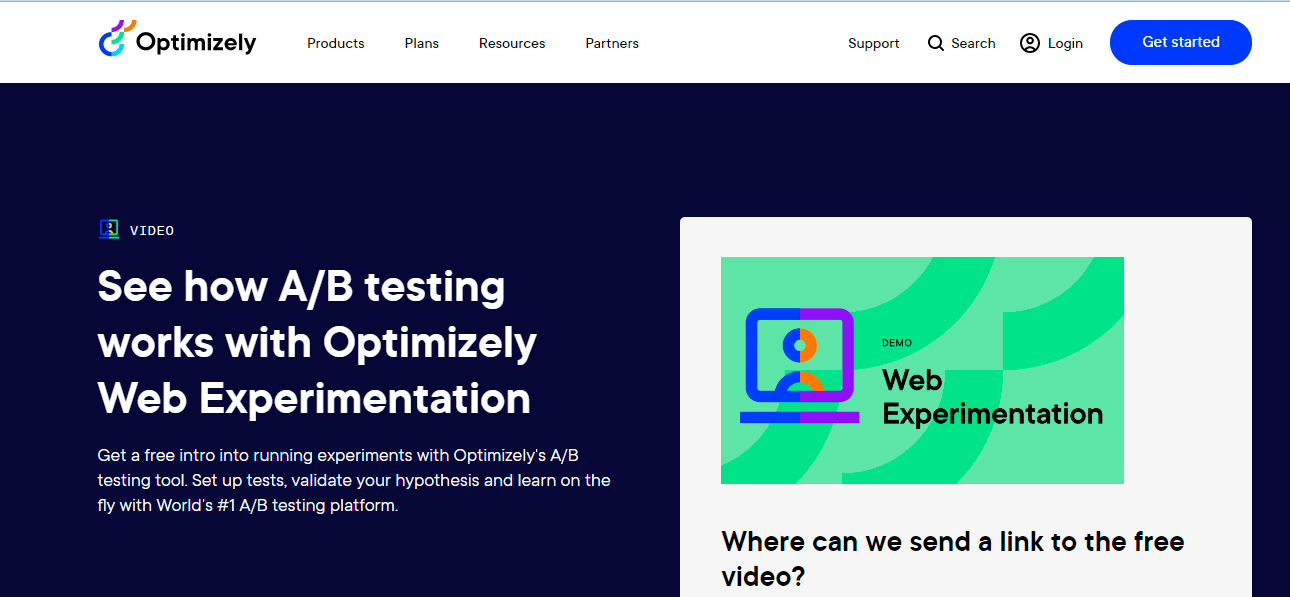
Optimizely is an enterprise-level experimentation platform to test marketing hypotheses. For example, if your assumption is that you can increase conversions by changing your CTA button from black to red, you can test it through Optimizely.
Optimizely is designed for high-traffic websites. However, it works excellent on low-traffic sites as well. It has split and multi-page testing capabilities, meaning you can run different experiments based on location, cookies, and other parameters on the same page simultaneously.
The best part: you don’t have to worry about writing a single line of code. Everything is preset for your ease. You simply have to adjust the tool’s visual editor to get results.
Since Optimizely is an enterprise program, it might not be cost-effective for small businesses.
13. BuzzSumo
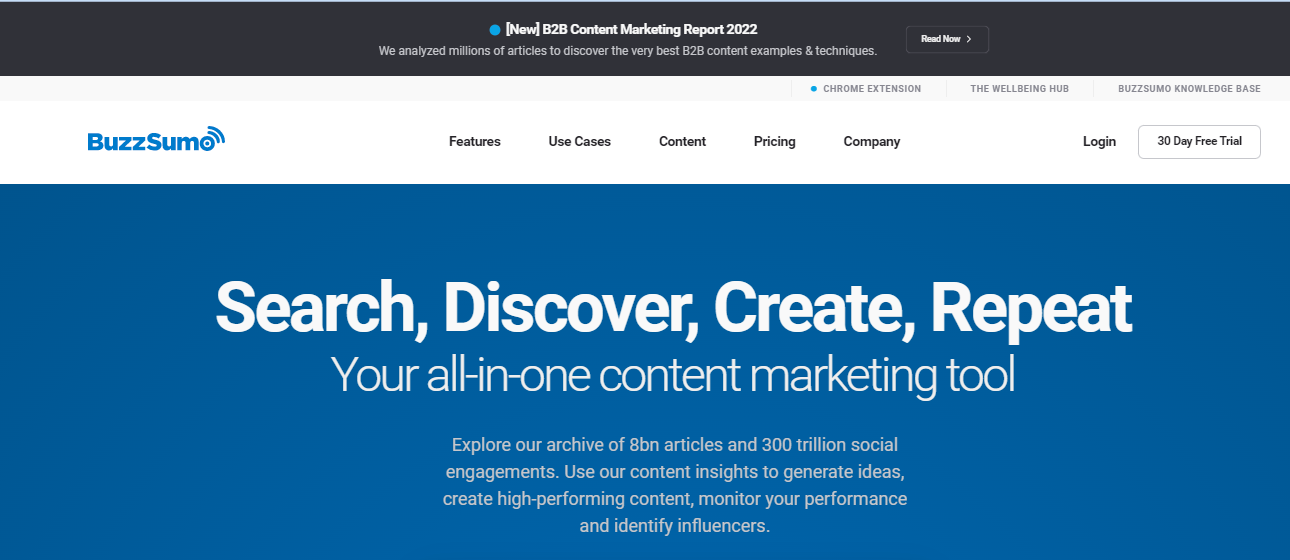
BuzzSumo is an excellent tool for content marketers and businesses looking to gain traction.
Hosted in the cloud, BuzzSumo shows the most viral content on a given topic using short-tail and long-tail keywords. It determines the most popular subjects by analyzing social shares, likes, retweets, backlinks, and other engagement metrics. You can also filter topics by date, geography, language, domain, word count, content type, and publisher size.
BuzzSumo has also introduced an influencer marketing feature, which lets you find movers and shakers that can act as your brand ambassadors.
That said, everything good has a cost, and it is considerable in the case of BuzzSumo. Pricing starts at $99, with enterprise-level privileges costing up to 299$/month.
14. Contentsquare
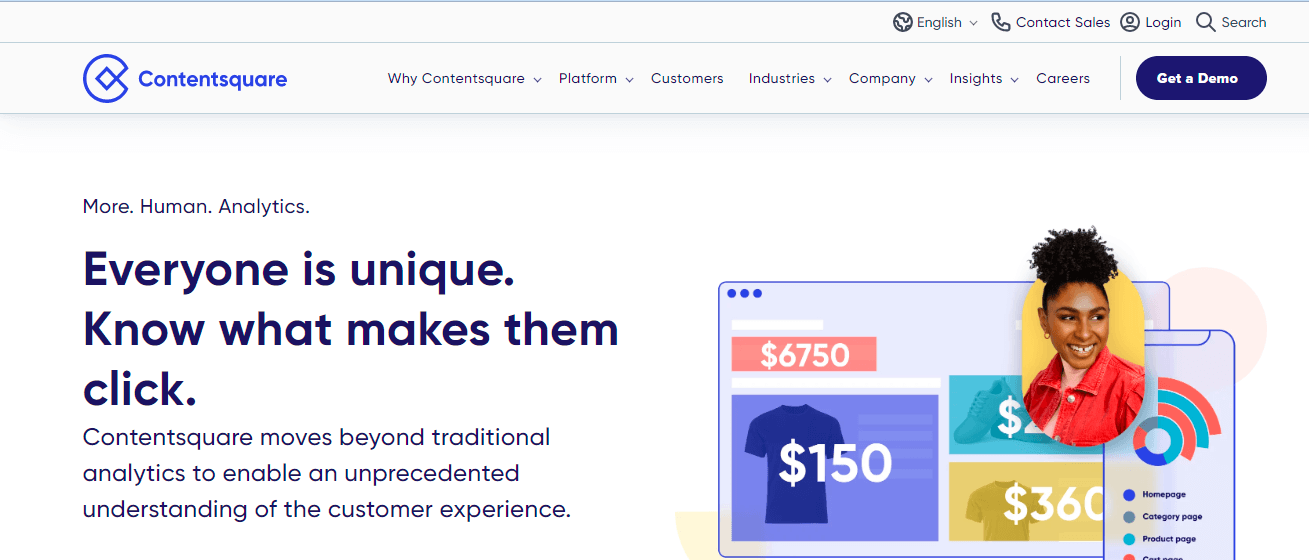
Contentsquare is another customer journey mapping software designed to diagnose conversion-affecting issues on your website. However, what separates ContentSquare from other tools on this list is its unique metrics.
While metrics like bounce rate and scroll percentage give you a general overview of website performance, they don’t dig into micro-behaviors and interactions of users.
ContentSquare heat maps traffic based on attractiveness rate and revenue per click instead of just showing how many times a user clicks a particular element. Knowing which parts drive the most sales in terms of impactful insights like revenues and attractiveness allows you to make more effective decisions.
Content Square is also fast and integrable with A/B testing and Google analytics, making it extremely versatile and results-driven.
The Importance of Conversion Rate Optimization
No matter how well-designed your website and applications are, there’s always room for improvement. Plus, paid advertising is not getting any cheaper, and it doesn’t compensate for any bugs and limitations in your conversion funnel.
Conversion rate optimization tools work with your existing traffic, meaning you don’t have to spend more to get new customers. You get better at converting, which increases your sales numbers without breaking the bank and lowering customer acquisition costs.
The money you save can then be spent on additional acquisitions. In turn, as you make more profit, you become profits to your affiliates and partners.
In a nutshell, CRO tools create a momentum of learning and success that’s hard to replicate without knowing user behavior and website performance.
Conclusion
Every successful CRO strategy starts with the right tools. Depending on your website’s needs and issues, you’ll have to use several conversion rate optimization tools to improve business performance simultaneously. This multi-pronged approach will also help you save money on critical features while ensuring a comprehensive CRO tools stack.
Customer Review at 
“Great performance for the price, and plenty of control”
Sean P [SMB Owner]
Najam Ahmed
I work as a digital content producer at Cloudways. Besides that, I love to read, and i love to play the guitar. Fan of all things Arsenal and the Patriots. Occasional gamer. I like to fly drones too. Jack of all trades.
